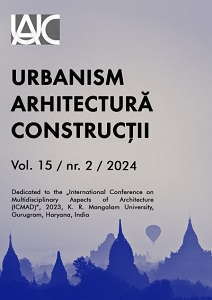Architectural Narratives: Storytelling for Autism
Architectural Narratives: Storytelling for Autism
Author(s): Nandini Bhandari Sharma, Bandana JhaSubject(s): Architecture, Cognitive Psychology, Neuropsychology
Published by: INCD URBAN-INCERC
Keywords: neurodiverse; digitization; inclusive; augmented; virtual;
Summary/Abstract: The phrase "neurodiversity" refers to the "diversity" in neural systems of people from various age groups, castes, genders, nationalities, and other groupings that are more common in society. Communication is the thread that establishes a dialogue between individuals tangibly and intangibly. Digitization has taken the steering to control as to how this communication (or interaction) can be established and delivered to enhance human experiences in the physical world and to bend the neural systems further to meliorate their perceptual and cognitive abilities. This technology (and its variants) has been used for a variety of purposes globally, specifically to support neurodiverse people. For example, immersive virtual reality environments can be used to improve social interaction for individuals with autism spectrum disorder through storytelling. A narrative of the space can improve their behavioral response in a given situation. For people in the neurodivergent section or with behavioral disorders or disabilities, the major goal is to increase the environment's stimulation such that their surroundings are comfortable and relatable. The study aims to showcase the importance of storytelling not only in physical space but digitally as well with the help of transmedia narratives for an inclusive interaction among individuals with autism spectrum disorder (ASD).
Journal: Urbanism. Arhitectură. Construcţii
- Issue Year: 15/2024
- Issue No: 2
- Page Range: 183-192
- Page Count: 10
- Language: English

